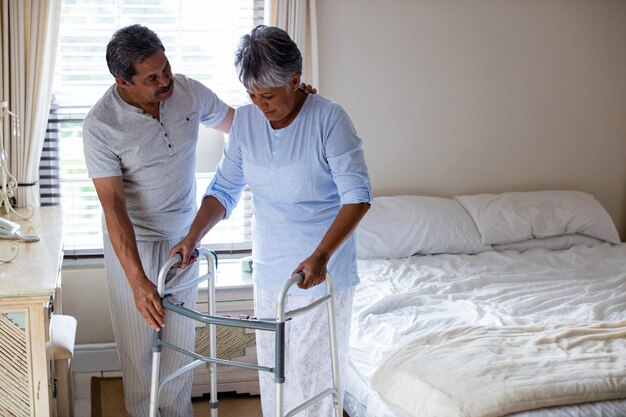How a Nursing Home Food Manager Ensures ServSafe Excellence
Nursing homes are more than just places for care—they're homes to many who deserve the utmost attention to safety and well-being. One critical aspect of maintaining a safe and healthy environment is food safety. In this realm, the ServSafe program plays a pivotal role, and the food manager is on the front lines ensuring its protocols are followed. This article explores how nursing home food managers can best protect and implement ServSafe standards to ensure the safety and satisfaction of residents.
🌟 The Significance of ServSafe in Nursing Homes
ServSafe is a comprehensive food safety training and certification program administered by the National Restaurant Association. It focuses on critical aspects like foodborne illness prevention, personal hygiene, and safe food handling practices. In environments like nursing homes, where residents may be more vulnerable to illnesses due to age and health conditions, strict adherence to these standards is particularly crucial.
Why Food Safety is Critical in Nursing Homes
- Vulnerable Population: The elderly often have weaker immune systems, making them more susceptible to foodborne illnesses.
- Regulatory Requirements: Nursing homes must comply with health regulations, and ServSafe provides a framework for meeting these standards.
- Quality of Life: Safe and nutritious meals enhance the quality of life for residents.
👩🍳 Key Responsibilities of a Nursing Home Food Manager
The role of a food manager in a nursing home goes beyond overseeing meal preparation. It encompasses ensuring the entire food process complies with safety standards, from supplier selection to food service.
Implementing and Enforcing ServSafe Protocols
To maintain a safe dining environment, nursing home food managers focus on several areas:
- Employee Training: All kitchen staff should be trained in ServSafe protocols to ensure everyone understands the importance of food safety.
- Monitoring Practices: Regular inspections and audits of food handling practices ensure compliance with safety standards.
- Temperature Control: Proper storage and cooking temperatures are crucial to prevent bacterial growth and foodborne illnesses.
Tip: Regular refresher courses and updates on ServSafe standards keep the staff informed of new safety practices.
📚 Comprehensive ServSafe Training and Certification
ServSafe training is essential for any food service operation. A nursing home food manager can take several steps to optimize this training for their team:
- Certification for All Staff: Ensure that all kitchen staff, not just management, are ServSafe certified to understand the significance of their daily tasks.
- Regular Updates: Since food safety standards evolve, regular training updates help staff stay current.
- Practical Training: Incorporate hands-on training sessions where staff can practice safe food handling in real scenarios.
Advanced Topics in ServSafe Training
Beyond basic safety, ServSafe covers advanced topics relevant to nursing homes:
- Allergen Management: With many residents having food allergies, understanding safe preparation techniques is vital.
- Cross-Contamination Prevention: Emphasizing procedures to avoid cross-contamination during food prep and service.
👨🍳 Effective Food Safety Practices
Maintaining food safety is a dynamic process that requires vigilant attention and continuous improvement. Here are practical steps a nursing home food manager can take:
Daily Safety Routines
- Temperature Logs: Keep detailed logs of food temperatures from delivery through service.
- Sanitation Schedules: Implement regular cleaning schedules for both the kitchen and dining areas to prevent contamination.
- Waste Management: Proper disposal of food waste and expired products minimizes the risk of hazards.
Pro Tip: Utilize technology like food safety apps to streamline logging and monitoring tasks, ensuring accuracy and ease.
🚀 Enhancing Menu Planning for Safety and Nutrition
Menu planning in nursing homes involves balancing safety, nutrition, and resident preferences. A well-planned menu supports both health and satisfaction.
Safe and Nutritious Menu Design
- Balanced Diet: Incorporate a variety of foods to meet the dietary needs of residents, including options for specific health conditions.
- Minimizing Risk Foods: Be cautious with high-risk foods, like raw eggs and undercooked meats, and offer safer alternatives.
- Resident Feedback: Regularly seek input from residents to tailor the menu to their tastes while ensuring safety.
🛡️ Crisis Management and Contingency Planning
Being prepared for emergencies, from food recalls to outbreak responses, is an essential component of food safety management.
Developing a Robust Response Plan
- Recall Protocols: Have a clear plan for managing food recalls, including communication and product removal procedures.
- Outbreak Handling: Establish immediate action steps for suspected foodborne illness outbreaks, including isolating affected food items and notifying health authorities.
Essential Takeaway: Regular drills and updated response protocols fortify a nursing home against potential food safety crises.
✅ Summary of Key Takeaways
For nursing home food managers, ensuring ServSafe excellence involves a balance of training, vigilant practice, and proactive management. Here's how they can stay on top of their game:
- Regular Staff Certification 📚: Keep staff certified and updated on ServSafe standards.
- Consistent Safety Monitoring 🔍: Conduct regular checks and audits on safety practices.
- Effective Menu Planning 📋: Design menus that prioritize safety, nutrition, and resident input.
- Preparedness Plans 🛡️: Have strong protocols for handling recalls and potential outbreaks.
Empowered with these tools, nursing home food managers can create a safe, delicious, and nutritious dining environment for all residents. By focusing on comprehensive ServSafe practices, they not only protect those in their care but also enhance their overall quality of life.

Related Topics
- a Nursing Home Food Manager Best Protects
- Are Nursing Home Charges Tax Deductible
- Are Nursing Home Expenses Deductible
- Are Nursing Home Expenses Tax Deductible
- Are Nursing Home Fees Tax Deductible
- Are Nursing Homes Covered By Medicare
- Can a Doctor Force You Into a Nursing Home
- Can a Nursing Home Kick You Out
- Can a Nursing Home Kick You Out For Non Payment
- Can a Nursing Home Override a Power Of Attorney